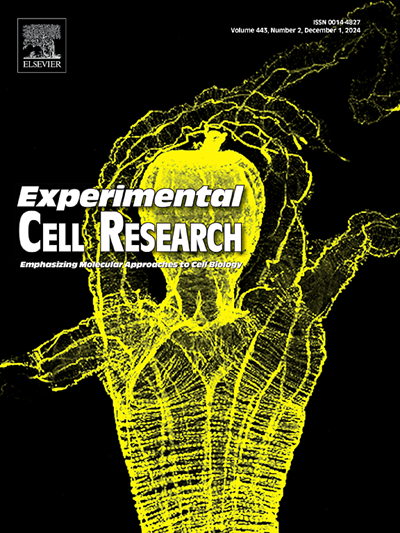用于培养肉细胞表征的生物标志物面板的开发
IF 3.3
3区 生物学
Q3 CELL BIOLOGY
引用次数: 0
摘要
近年来,人造肉被认为是大规模生产肉类的可持续替代品。养殖肉类生产的几个方面已经取得了重大进展。然而,在细胞培养、培养基组成、生产本身等方面仍有许多问题有待解答和优化。寻找良好的起始细胞群是一个挑战,需要强大的工具来表征细胞群。需要进行详细的分析,以确定骨骼肌生态位内的每种类型的细胞,从而优化大规模的养殖肉类生产。在这项研究中,我们开发了一套生物标志物,使用数字液滴PCR (ddPCR)和免疫荧光(IF)染色,从骨骼肌组织分离的异质细胞群中识别特定的细胞类型。我们发现,结合神经细胞粘附分子(NCAM)、钙钙蛋白1 (CNN1)和纤维连接蛋白(FN)可以分别预测骨骼肌管、平滑肌间充质细胞(SMMCs)和肌成纤维细胞的生长。此外,观察到成纤维细胞的早期细胞间相互作用是通过含有CNN1蛋白的细肌动蛋白丝触发的,随后形成肌成纤维细胞网络。此外,肌源性分化1 (MyoD)是检测骨骼肌生长的关键标志物,而肌源性因子5 (MyF5)可以在肌源性和非肌源性细胞中表达。MyF5在肌管核的分化阶段被检测到,表明MyF5在肌管形成过程中起未知的作用。本文章由计算机程序翻译,如有差异,请以英文原文为准。

Development of a biomarker panel for cell characterization intended for cultivated meat
Cultivated meat has in recent years been suggested as a sustainable alternative to produce meat at large-scale. Several aspects of cultivated meat production have demonstrated significant progress. However, there are still many questions regarding the cell culture, media composition, and the production itself to be answered and optimized. Finding good starter cell populations is a challenge to address and requires robust tools to characterize the cell populations. Detailed analysis is required to identify each type of cell within the skeletal muscle niche leads to optimized cultivated meat production at large-scale. In this study, we developed a set of biomarkers, using digital droplet PCR (ddPCR) and Immunofluorescence (IF) staining, to identify specific cell types within a heterogeneous cell population isolated from skeletal muscle tissue. We showed that combining Neural Cell Adhesion Molecule (NCAM), Calponin 1 (CNN1), and Fibronectin (FN), can be a powerful approach to predict the growth of skeletal myotubes, smooth muscle mesenchymal cells (SMMCs), and myofibroblasts, respectively. Moreover, early cell-cell interactions of fibroblastic cells were observed to be triggered through thin actin filaments containing CNN1 protein, to form, subsequently, myofibroblast networks. Besides, Myogenic Differentiation 1 (MyoD) is the key marker to detect skeletal muscle growth, whereas Myogenic Factor 5 (MyF5) can be expressed in myogenic and non-myogenic cells. MyF5 was detected at differentiation stages within the myotube nuclei, suggesting an unknown role during myotube formation.
求助全文
通过发布文献求助,成功后即可免费获取论文全文。
去求助
来源期刊

Experimental cell research
医学-细胞生物学
CiteScore
7.20
自引率
0.00%
发文量
295
审稿时长
30 days
期刊介绍:
Our scope includes but is not limited to areas such as: Chromosome biology; Chromatin and epigenetics; DNA repair; Gene regulation; Nuclear import-export; RNA processing; Non-coding RNAs; Organelle biology; The cytoskeleton; Intracellular trafficking; Cell-cell and cell-matrix interactions; Cell motility and migration; Cell proliferation; Cellular differentiation; Signal transduction; Programmed cell death.
 求助内容:
求助内容: 应助结果提醒方式:
应助结果提醒方式:


